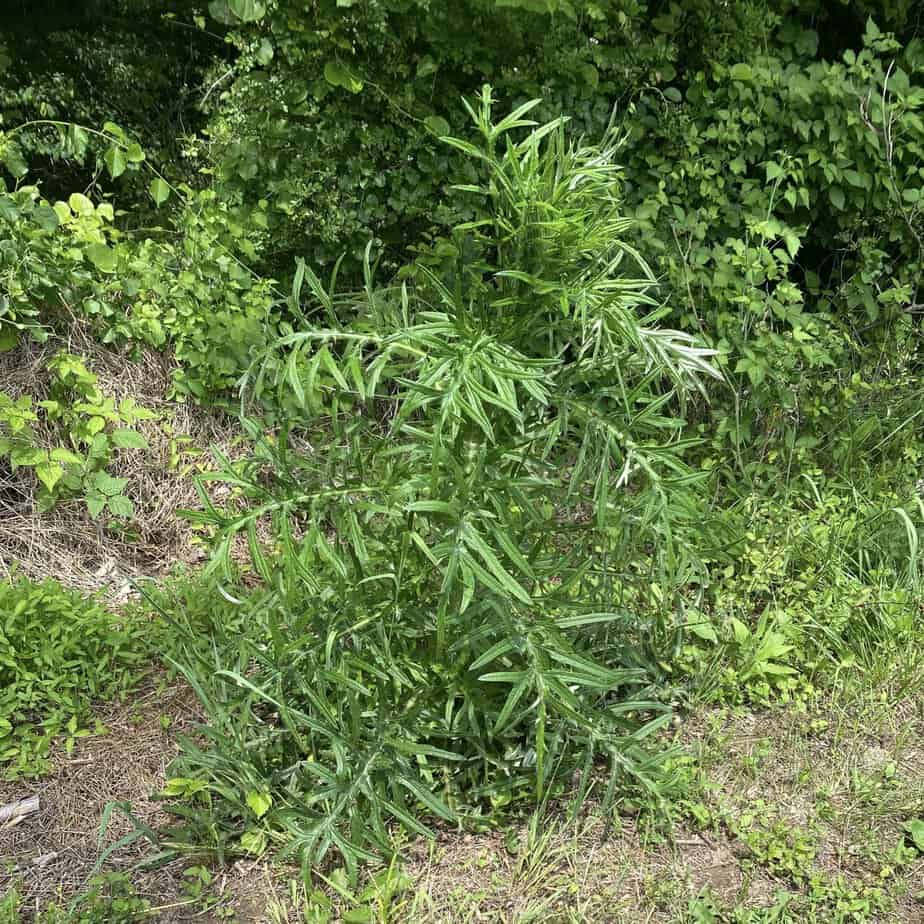Milk Thistle is a nasty weed that is a regulated class A noxious weed. At first glance the bright purple thistle/flower looks really pretty. However, don’t let the pretty flower fool you. This is not a desirable plant to have on your property. Read on to find out more.
Milk Thistle Identification
Here are the main characteristics of milk thistle.
First, it grows 2-6 feet tall. That is a big weed. Second, it produces one large pinkish-purple flower per stem. Third, the leaf edges and stems are loaded with spines. Really nasty, prickly, spines. Fourth, the leaves are shiny green with white marbling. Finally, the flower head is surrounded by spiny bracts. Milk thistle is pretty easy to identify.
Why it is Undesirable
Milk thistle reproduces by seed. Each plant can produce over 6000 seeds per year. Seeds fall in close proximity to the plant. They are moved by a variety of methods, which helps them spread. Erosion, animals, humans, and rain all easily move the seeds to new locations. After a rain, the seeds germinate, or they can remain viable in the soil for at least 9 years.
Each of these plants have a large footprint, similar to mullein. The bottom leaves are close together and cover a large area. This helps them to effectively block other plants from growing under them, therefore crowding out desirable species.
Unfortunately, if consumed by cattle, milk thistle can cause nitrous oxide poisoning.
Conversely, milk thistle is thought to have some positive health benefits for humans. In some cultures, it uses span back 2000 years. For example, it may help protect the liver, prevent bone loss, and enhance breast milk production. One thing is for sure, it is an antioxidant, and it is anti-inflammatory. These actions can help preserve brain function. Silymarin's anti-inflammatory effect is also used to control acne. As always, do your research before taking anything. Almost all prescription and over the counter supplements have side effects.
